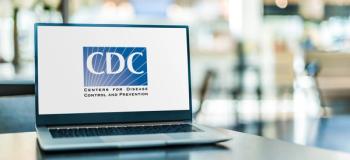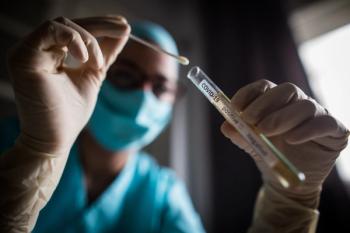
OTC genetic tests: Coming soon to a pharmacy near you (maybe)
On May 11th the news that Walgreens, partnering with Pathway Genomics, was going to offer customers a genetic testing kit made headlines almost as fast as a world peace announcement. Then Pathway received a letter of inquiry from the FDA, and Walgreens decided to halt the initiative until more clarity was reached. However, when genetic testing kits do become available at retail outlets, there will be a need for plenty of patient education, which pharmacists can best provide.
On May 11, the news that Walgreens was going to offer customers a genetic testing kit made headlines almost as fast as a world peace announcement. The test manufacturer, San Diego-based Pathway Genomics, Inc., described its "Discover Your DNA" genetic health report as an over-the-counter kit offering more than 70 genetic tests to home users. Consumers would submit their saliva specimens to Pathway by mail, specifying the tests they desired, and would obtain their results through the Pathway website.
Within hours FDA requested more information and the deal imploded. James Woods, FDA deputy director of Patient Safety and Product Quality of In Vitro Diagnostic Device Evaluation, sent a letter to James Plante, CEO of Pathway Genomics, asking for clarification. Walgreens then issued a statement on May 12 that said in part, "We've elected not to move forward with offering the Pathway product to our customers until we have further clarity on this matter."
Regulatory specialist Ned Milenkovich, PharmD, JD, of the Chicago firm McDonald Hopkins LLC and a regular contributor to Drug Topics, said that the FDA request is significant because the agency's letter states that the product "appears to meet the definition of a device," which falls under a different set of regulations than would a lab-developed test.
Milenkovich added that devices are regulated in three classes, according to their level of risk to a patient: Class I (bandages), Class II (stethoscope), Class III (pacemaker). Then there are In Vitro Diagnostic Devices (IVD, lab-created tests using specimens from the body). What will happen as a result of its letter, Milenkovich said, is that FDA will make Pathway "go through whatever requirements are necessary, depending on how they classify this device. At the end of the day, what I think they are saying is 'We believe you are producing an IVD and tell us why you're not.'"
For now, the Pathway test, which was promoted as the means to identify consumers' pharmacogenomic response to prescription medicines and their propensity for chronic disease, and also to help predict their gene-carrier status in pregnancy planning, will not be available in a retail pharmacy setting.
Pharmacists pick up the slack
Doug Hoey, RPh, MBA, senior vice president and COO of the National Community Pharmacists Association in Washington, DC, commented on what this scenario adds to the discussion of the evolving role of the pharmacy and the pharmacist in patient care.
Hoey said that with "more than 25% of flu immunizations done in pharmacies, " plus healthcare reform and a shortage of primary care physicians, nurse practitioners, and physician assistants, the door opens even wider for pharmacists to expand their role in the delivery of healthcare. But he also recognizes that as new tests come to the consumer market by way of the pharmacy, there will be extra responsibility upon the pharmacist to answer questions and provide guidance.
"When I saw this story, the thing that really rang my bell was the important role for pharmacists to explain products like that to patients. It's crucial for the pharmacist to be well versed on the product; to explain what to expect and what not to expect, and how to interpret those results."
Moving closer to personalized medicine
Holly Henry, a pharmacist and president and CEO of Rxtra Care, Inc., a 3-store chain of Seattle pharmacies, said that the role of a typical community pharmacist is "to help people to keep well." In her opinion, it is really the pharmacist who will help people reach their goals in therapy, and dispensing plus teaching is part of that.
"With the pipeline of regular oral medications kind of drying up, personalized medicine is where it's going to be, and this will require community pharmacists to be able to compound these drugs and to counsel patients."
Hoey, too, believes that the trend toward pharmacists broadening their role in healthcare delivery, with expanded expectations and increased desire to offer more, "is absolutely going to happen."
He does not, however, see pharmacists as becoming or expected to be pharmacogenetics experts. Although most pharmacists have heard the term, Hoey said, they may be unsure of what it means. Responding to the need to keep pace with the science, the NCPA has scheduled an August release date for an educational primer on pharmacogenomics it has prepared for its members.
Putting value on professional advice
While Henry believes there is "going to be a place for pharmacy in the patient-centered medical-home concept, helping physicians and others on the healthcare team manage therapy," both she and Hoey agree that this is work for which pharmacists have to be paid.
"With immunizations it's much more straightforward; you get paid for the product and payment for the administrative services. The business model has to be there, or none of this will work," Hoey said.
But the timing is right, Hoey said; the momentum is there and opportunities now exist to expand the pharmacist role and to create a diversified process of payment for product and services.
Barbara Hesselgrave is a freelance medical writer in Virginia.
Newsletter
Pharmacy practice is always changing. Stay ahead of the curve with the Drug Topics newsletter and get the latest drug information, industry trends, and patient care tips.













































































































































